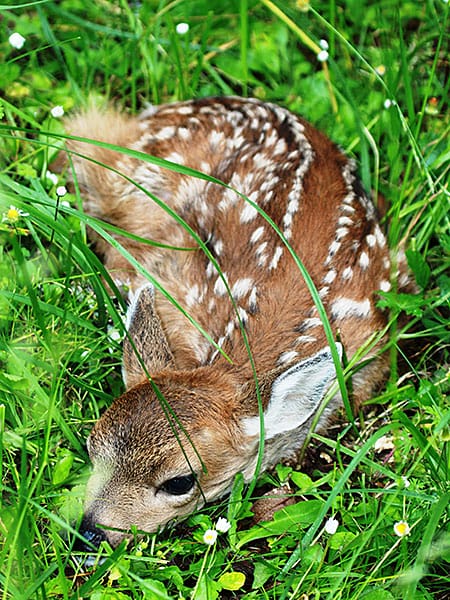| Online: | |
| Visits: | |
| Stories: |

| Story Views | |
| Now: | |
| Last Hour: | |
| Last 24 Hours: | |
| Total: | |
‘Abandoned’ Fawns: What You Should Know, and Should not do if you ‘Find’ Them
(Before It's News)

Delaware -(Ammoland.com)- Fawning season for white-tailed deer in Delaware has begun, with most fawns born during the last week of May through the first week of June.
Every year at about this time, well-meaning individuals call DNREC’s Division of Fish & Wildlife about “abandoned” fawns, thinking that “doing the right thing” means “saving” these newborns by bringing them home or to a wildlife rehabilitator.
Actually, that’s the wrong thing to do, according to Division of Fish & Wildlife Program Manager and biologist Joe Rogerson: “People who remove fawns from the wild may not realize some wildlife facts,” he said. “First and foremost, the fawn hasn’t been ‘abandoned’ at all.
“So even if a fawn appears to be alone, the mother is likely bedded close by. Newborn fawns need to feed every few hours so the doe never strays far,” Rogerson said. “Fawns don’t become active enough to start traveling with their mothers until they are about two months old, so the survival instinct of a newborn fawn is to stay very still and ‘hide’ from predators.”
Furthermore, research has shown that many fawns cared for by people have a greatly decreased chance of survival once they are released back into the wild, compared to deer raised by their mothers. Fawns raised in the wild are able to learn survival instincts from their mothers that people simply cannot teach them.
Not only is removing a fawn from its hiding place not in the animal’s best interest, it is also illegal for an individual in Delaware to possess or attempt to rehabilitate a live white-tailed deer or any native wildlifewithout a permit from the Division of Fish & Wildlife. These offenses are punishable by fines of $100 to $250 per offense, plus the costs of prosecution and court costs. A second offense within five years of a conviction is punishable by a fine of $100 to $500 plus court costs; the person may also face up to 20 days in jail in addition to or in place of the fine. In addition, any deer held illegally in captivity will be removed by the Division of Fish & Wildlife, and in some cases these confiscated deer are euthanized if not suitable for rehabilitation. Furthermore, it is a violation of both state and federal laws to move wildlife between states.
“The bottom line is, if you really care about the fawn and its well-being, please leave the animal alone. Its mother will soon return and the animal will have a far greater chance at survival than if you take it home,” Rogerson added. “This same practice is applicable for most recently-born animals that people may encounter this spring. Generally, an animal’s best chance at survival is when it is left in the wild.”
Source: http://www.ammoland.com/2015/06/abandoned-fawns-what-you-should-know-and-should-not-do-if-you-find-them/



